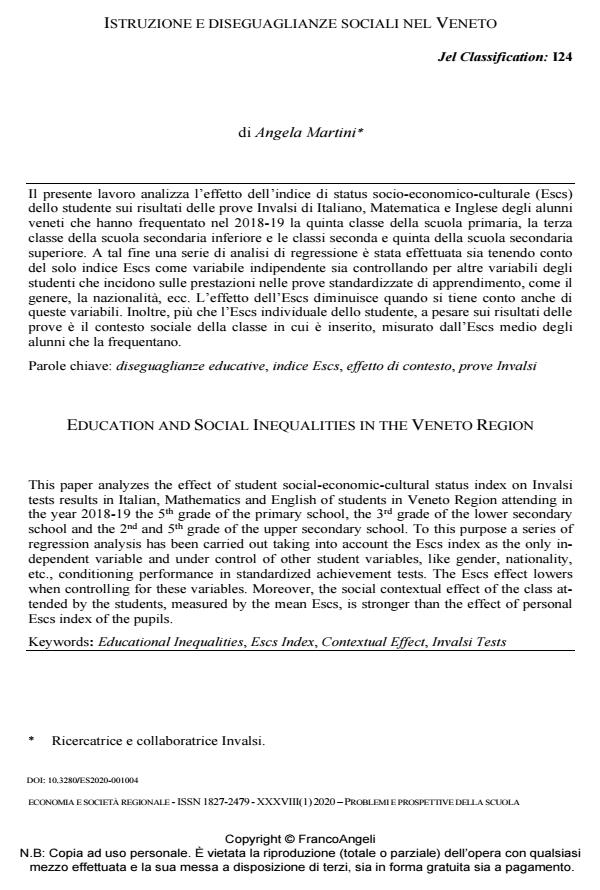Education and social inequalities in the veneto region
Journal title ECONOMIA E SOCIETÀ REGIONALE
Author/s Angela Martini
Publishing Year 2020 Issue 2020/1
Language Italian Pages 19 P. 60-78 File size 333 KB
DOI 10.3280/ES2020-001004
DOI is like a bar code for intellectual property: to have more infomation
click here
Below, you can see the article first page
If you want to buy this article in PDF format, you can do it, following the instructions to buy download credits

FrancoAngeli is member of Publishers International Linking Association, Inc (PILA), a not-for-profit association which run the CrossRef service enabling links to and from online scholarly content.
This paper analyzes the effect of student social-economic-cultural status index on Invalsi tests results in Italian, Mathematics and English of students in Veneto Region attending in the year 2018-19 the 5th grade of the primary school, the 3rd grade of the lower secondary school and the 2nd and 5th grade of the upper secondary school. To this purpose a series of regression analysis has been carried out taking into account the Escs index as the only independent variable and under control of other student variables, like gender, nationality, etc., conditioning performance in standardized achievement tests. The Escs effect lowers when controlling for these variables. Moreover, the social contextual effect of the class attended by the students, measured by the mean Escs, is stronger than the effect of personal Escs index of the pupils.
Keywords: Educational Inequalities, Escs Index, Contextual Effect, Invalsi Tests
Jel codes: I24
Angela Martini, Istruzione e diseguaglianze sociali nel Veneto in "ECONOMIA E SOCIETÀ REGIONALE " 1/2020, pp 60-78, DOI: 10.3280/ES2020-001004